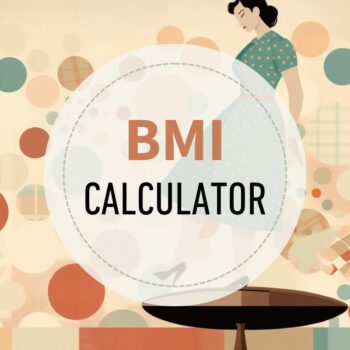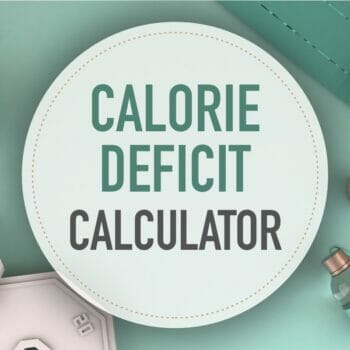Macro Calculator
This free, easy-to-use macro calculator gives you your optimal macronutrients and calories. It’s a weight loss or muscle gain calculator for both women and men.
Combine with macro counting or flexible dieting to reach your goals faster.
How to get leaner and stronger?
Our comprehensive macro-based fat loss program shows you how. Learn more
How do macros work?
The foods we eat are made up of three macros (macronutrients). These are carbohydrates (carbs), protein, and fat.
Chicken is high in protein but has no carbs; rice is high in carbs but has very little fat or protein. The three macronutrients provide the body with energy and raw materials for growth and repair.
By calculating the appropriate daily calorie amount for you, we can then break this down into the best macronutrient ratios to achieve weight loss.
Basic steps for macro counting
- Enter details into the calculator
Make sure to choose the correct goal. - Take note of your calories and macros
These will be the targets you are aiming for each day. - Track your macros
Use an app or pre-plan your meals. - Measure results
Don’t use basic weight scales.
Use proper body composition scales (we recommend Renpho) to measure fat and muscle mass changes.
What is a good macro ratio for fat loss or muscle gain?
Your macros should be based on your Total Daily Energy Expenditure (TDEE) and goals.
The calculator defaults to the best macro ratio proven to work for most people.
This ratio is:
- 30% fat
- Protein is 0.65 grams per pound of body weight,
- The remainder is carbs.
Depending on your goal, this will be either a calorie deficit or a surplus.
You can go further and make more adjustments: Perhaps you’re an extreme endomorph and do better with fewer carbs. Or perhaps you have one kidney and need to eat less protein.
You can fine-tune your results with a bit of math. See how to change your macros here.
What is a good protein ratio?
Rather than a percentage, proteins are based on your body weight. Our calculator has three settings:
- Moderate adjusts the ratio to 0.65 grams per pound of body weight.
This is appropriate for sedentary individuals or people with higher body fat percentages. - High is for active people with moderate strength training and an average body fat percentage.
- Maximum will set the ratio to 1 gram per pound.
This amount is good for bodybuilding and gaining muscle mass. You must be doing intense training.
Find out how to fine-tune your protein ratios when counting macros
Fat macro ratio
Set fat at 30% of daily energy expenditure.
Most people do very well with this amount of fat. See more about choosing the best macro fats. Because of high-fat diets like keto, many people are now eating more fat than they need to.
Carbohydrate macro ratio
Once you’ve calculated protein and fat, the remainder of your daily calories should be from carbohydrates.
Carbs fuel your body and workouts – and are the body’s preferred energy source.
If you are coming from a low-carb background, this may seem high. However, according to respected nutritional research, this is a moderate amount of carbs.
If you are eating according to your TDEE, the notion that carbs cause weight gain or stop fat loss is incorrect.
Using as a Calorie Deficit Calculator
As a weight loss calculator, this tool establishes a safe calorie deficit only.
The Lose option puts you in a 20% calorie deficit, promoting safe, steady weight loss.
The best macro ratio for body recomposition
If you want to recompose your body (lose fat and gain muscle simultaneously), then use the body recomposition calculator.
Macro ratio for maintenance
The Maintain button shows you the macro levels to maintain your current weight.
This is great if you have lost weight and don’t want to gain it back.
Macro ratio for muscle gain
The Gain button puts you in a 20% calorie surplus.
The macro breakdown is designed to build muscle fast in conjunction and must be combined with a comprehensive weight training program.
Underweight people can also use it.
TIP: Try starting with the maintenance goal and gradually increasing calories if you want lean muscle gains.
Calculating macros using your body fat percentage
The calculator uses your body weight to determine calories and macros.
However, you can obtain superior results by using your body fat percentage. The calculator allows you to choose which method: Normal for body weight, Lean Mass for fat percentage.
When to choose the Lean Mass Formula
If you are lean (have a low body fat percentage), choose the Lean Mass formula and enter your body fat %.
If you are classified as obese and have a lot of weight to lose, the lean mass formula is superior. You can read more about macro counting and obesity.
Help? Calculate your ideal body weight or get an assessment of your body fat percentage.
Why the difference? Muscle cells burn more calories than fat cells, so the more accurately we measure this, the better your results will be.
How to calculate macros per meal
You can break this down into meals once you’ve calculated your daily macros in the calculator.
Choose from 2 to 6 meals daily to see the macro ratio you can track for each meal. For some people, this is easier, but for others, this is too much detail.
Do what works for you.
Meal Plans
See a 5-day macro-based meal plan. It includes three meals and two snacks per day.
Macro calculator activity level settings
A higher activity level means a higher daily calorie goal.
For example – if you maintain your weight at 2,000 calories per day, adding vigorous daily exercise means you need more calories to maintain your weight.
If you are sedentary and trying to lose weight, adding exercise will increase your daily calorie goal.
The idea seems counter-intuitive, but more energy is required to fuel your workouts. More workouts lead to increasing metabolism; therefore, more fat is burned!
Undereating is one of the leading causes of the weight loss plateau.
So many of our clients previously “hit the wall” with dieting. They would continually reduce calories, stop losing fat, and gain weight when they eat a little more.
Macro counting defeats this by prescribing the right food and calorie levels.
Which activity level do I choose?
- Sedentary: Just regular everyday activity like a bit of walking, a couple of flights of stairs, eating, etc.
- Light: Any activity that burns 200-400 calories (females) or 250-500 calories (males) over your sedentary amount.
- Moderate: Any activity that burns 400-650 calories (females) or 500-800 calories (males) more than your sedentary amount.
- Extreme: Any activity that burns more than 650 calories (females) or more than 800 calories (males) in addition to your sedentary amount.
Other options for determining your calorie burn
- Use our calories burned calculator – it accurately assesses over 380 activities.
- Use a fitness tracker – like a Fitbit or Apple Watch (note that they can overestimate calorie burn).
- Use a suitable app – like MapMyFitness
Why should I eat more when I exercise more?
High physical activity not fueled with enough calories will lead to muscle catabolism (breakdown of muscle fiber).
This lack of nutrition could stall your weight loss, so eat up if you love to exercise!
I’ve got my macros – now what?
Once you’ve identified your target daily macros, you must determine the macros in all your foods.
By tracking them daily, you can reach your recommended macro targets that encourage fat loss, muscle gain, or whatever your goal may be.
You can learn more about the macro counting system and the flexible dieting philosophy. Many people use an app like Myfitnesspal to track macros.
For more specifics on what to eat – see a sample macro meal plan or a list of macros for familiar foods.
View article sourcesSources
- Mifflin, M. D., St Jeor, S. T., Hill, L. A., Scott, B. J., Daugherty, S. A., & Koh, Y. O. (1990). A new predictive equation for resting energy expenditure in healthy individuals. The American Journal of Clinical Nutrition, 51 (2), 241-247. Link
- McArdle, W. D., Katch, F. I., & Katch, V. L. (2010). Exercise physiology: nutrition, energy, and human performance. Lippincott Williams & Wilkins. Link
- Jequier, E. (1994). Carbohydrates as a source of energy. The American journal of clinical nutrition, 59(3), 682S-685S.
- Lemon, P. W., Tarnopolsky, M. A., MacDougall, J. D., & Atkinson, S. A. (1992). Protein requirements and muscle mass/strength changes during intensive training in novice bodybuilders. Journal of Applied Physiology, 73(2), 767-775. study abstract link
- Grundy, S. M. (1999). The optimal ratio of fat-to-carbohydrate in the diet. Annual review of nutrition, 19(1), 325-341. abstract
- Conlin, L.A., Aguilar, D.T., Rogers, G.E. et al. Flexible vs. rigid dieting in resistance-trained individuals seeking to optimize their physiques: A randomized controlled trial. J Int Soc Sports Nutr 18, 52 (2021). https://doi.org/10.1186/s12970-021-00452-2
2,104 Comments


 Menopause Macro Calculator
Menopause Macro Calculator Intermittent Fasting Calculator
Intermittent Fasting Calculator BMI Calculator
BMI Calculator Calorie Deficit Calculator
Calorie Deficit Calculator Body Recomposition Calculator
Body Recomposition Calculator
I weightlift 4-5 times a week 30-45 minutes, and I walk 30-40 minutes 1 time a week, and sprint 1 time a week. I also walk about 7,000 steps a day. Would this be considered light or moderate activity?
Hi Ashley, It seems like you would be moderate most days. You could also calculate a light day set for days you might not be as active. It’s typically good to have a couple different sets on hand to use since life can be unpredictable and you want the right nutrition to determine your rate of fat loss not exercise. 🙂
Thanks for all of this!
When estimating activity level does that include long walks (I try to walk briskly). I try to do other more intense cardio like rowing in addition to resistance training classes at F45 about 2 times a week (I am trying to start 3 times), but I also walk a lot. Example yesterday I walked to work and back and tried to walk briskly about maybe 8000 steps.
Also see your breakdown below, would that calorie burned number be per day or week?
Thanks!
Matt
This is your breakdown I was referring to:
Which activity level do I choose?
Sedentary: Just regular everyday activity like a bit of walking, a couple of flights of stairs, eating, etc.
Light: Any activity that burns 200-400 calories (females) or 250-500 calories (males) over your sedentary amount.
Moderate: Any activity that burns 400-650 calories (females) or 500-800 calories (males) more than your sedentary amount.
Extreme: Any activity that burns more than 650 calories (females) or more than 800 calories (males) in addition to your sedentary amount.
Sorry Ted. I think the right question for me is when assessing my activity level in the calculator should I include the walking (example an hour of walking – ideally brisk – in a day split – even if split into two periods).
Here is how you describe it at a high level. Trying to decide if I am light or moderate:
Assess your weekly activity level
Sedentary
No purposeful exercise.
Light
1-3 hours exercise per week.
Moderate
3-7 hours exercise per week.
Heavy
7+ hours intense exercise per week.
Hey Matthew, I think you you it makes sense to do sedentary set as your base. Then use your phone or watch to track your activity and adjust your calories and macros based on that days activity. MyFitnesspal will do this for you if you connect sync your device.
If you set the calculator to “lose” then that deficit should be consistent throughout the week.
Does that help?
Is this net carbs or true carbs? Thanks!!
Hi Lisa, The calculator displays total carbs.
I’m a 15 yo female, 5’9, approx. 245 lbs and have PCOS. I’ve been told I have my dad’s bones ;/. I know I have to lose weight but everything involving my knees hurts really bad. Especially since I got hurt in my athletics class where I had to do 100 yd lunges and bleachers because I was too slow in running. I know get extremely anxious when it comes to working out. How can I adjust my macros to help me lose weight?
Hi Salina, Focus on your macros to lose weight using the sedentary setting and then just shoot for around 6-8k steps a day. You can increase exercise down the road once you’ve lost some fat tissue weight.
Hi Ted! When entering these goals into something like MyFitnessPal, should this be the NET calorie goal?
Hi Caitlin, If you want MFP to adjust your macros based on the activity being fed into it from your wearable, then put in your sedentary calorie and macro set as a base.
let’s go
I’m a 26 y/o male who is 6’4″ and 215 lbs. I like to think I’m around 25% body fat based on pictures. I want to gain more muscle mass but lose a bit of a belly that I have acquired. I’m struggling with calculating my macro ratio that is best. I have a TDEE of ~3000 calories a day. What should my macro chart be? I’m aiming for a -10% calorie deficit based on your advice on this website to lose fat and gain muscle. Thanks for the help.
Hey Brian, I’d be happy to help you dial in those calories and macros to achieve the goals you mentioned. Fill out my form here: Expert Macro Calculations
I walk 10 miles a day as a mailman and weight train 4x a week for an hour. Would that be considered very active? I burn an average 3600 calories a day.
Hi Leon, I would think so, but you may want to use the sedentary amount above and then add in your exercise to be more specific. Since trackers can “overestimate” use our exercise calorie burn calculator which is more accurate. Calories Burned Calculator
Hello, I would like to lose weight. I’m 48, 5’5″, 210. I do HITT classes 3-4 times a week and ride a spin bike or elliptical 2-3 times a week for 30 min. I have a desk job where I sit most of the day (trying to make a habit of getting up every hour to do something). do you suggest the moderate activity? The calculator already creates a calorie deficit when choosing lose weight correct? How often should we come back to adjust macros?
Hi MG, It seems like some days it could be moderate and others it may be light exercise. You should always be monitoring your progress but generally after every 10-15 pounds lost. Since you have more than 40 pounds of fat tissue, that will skew the calculations some. It my be worthwhile for you to have me do the calculations for you to make sure everything is dialed in.
I would like to lose weight, I am 63 5’6 . Not very active. I have had 2 not very good knee surgeries. But we are going to try to start walking. I weigh 206.6 . My husband is 6’ 225 pounds and 1 knee surgery. I understand Atkens and lost 40 pounds, I was also inmy late 40’s. with a starting weight of 175.I have tried several times to do it again and it just doesn’t work What do I have to do to make it work again? I just don’t understand keto or how to do it.
Hi Diana, I would recommend the balanced approach or you’ll likely be in the same boast several years from now since keto nor atkins teach you sustainable habits. I’d be more than happy to meet with you and your husband and give you some more recommendations. Click the book a consult tab in the menu.